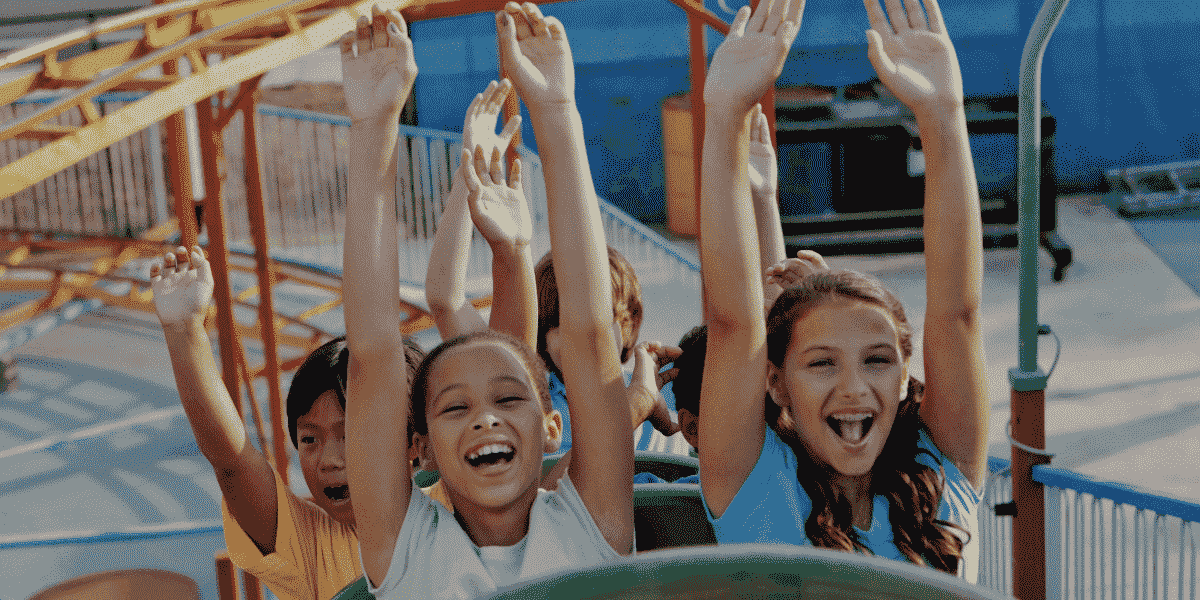Roller coasters, those exhilarating structures of twists, turns, and drops, are a beloved amusement park attraction enjoyed by people of all ages. But when it comes to children, the thrill can quickly turn into a safety concern for parents and guardians.
Ensuring that children understand roller coaster safety is essential for a worry-free and enjoyable experience at the theme park. In this blog, we’ll delve into the top strategies for teaching children about roller coaster safety while maintaining an atmosphere of excitement and adventure.
The Importance of Roller Coaster Safety Education
Before embarking on a roller coaster adventure, it’s crucial to lay the foundation for understanding why safety rules are non-negotiable. Start by having an open conversation with your child about the reasons behind safety regulations. Explain that these rules are in place to protect everyone and to ensure that the thrilling experience remains fun and free from harm.
Choose Age-Appropriate Rides
Not all roller coasters are suitable for children of all ages. To ensure a positive experience, carefully select rides that are appropriate for your child’s height, age, and comfort level.
Most amusement parks have height and age requirements clearly posted near each ride. Encourage your child to respect these guidelines to prevent them from being scared or overwhelmed.

Familiarize with Ride Signs and Symbols
Teaching your child to understand ride signs and symbols is a fundamental aspect of roller coaster safety education. Explain the meaning of the various signs, such as height restrictions, health advisories, and ride intensity indicators. Make it a fun and interactive learning process, quizzing them on different symbols to reinforce their comprehension.
Emphasize the Importance of Secure Restraints
Children must grasp the significance of secure restraints before the ride begins. Whether it’s a lap bar, harness, or seatbelt, teach them how these restraints function to keep them safely seated throughout the ride.
Stress that fidgeting, attempting to remove restraints, or disobeying ride operators’ instructions can jeopardize their safety.
Lead by Example
Children often learn best through observation. Demonstrate responsible behavior by following safety rules yourself. Buckle up, remain seated, and keep your hands and belongings inside the ride at all times. When your child sees you prioritizing safety, they’re more likely to internalize the importance of doing the same.
Discuss the Sensations of Roller Coasters
Before the ride, talk about the sensations your child might experience – the rush of wind, the stomach drops, and the twists.
This discussion can help normalize these feelings, making them less intimidating. Address any concerns your child might have and remind them that these sensations are all part of the thrilling experience.

Encourage Communication
Teach your child to communicate their feelings before and after the ride. If they’re feeling uneasy, anxious, or unwell, they should feel empowered to express themselves.
Open lines of communication ensure that your child’s well-being is prioritized, and necessary actions can be taken if they’re not up for a particular ride.
Reinforce Patience and Respect for Rules
Waiting in line is an inevitable part of the theme park experience. Use this time to reinforce patience and respect for the rules. Remind your child that everyone is eager to have a good time, and respecting others in line contributes to a positive atmosphere.
Addressing Fear and Anxiety
It’s normal for children to feel fearful or anxious about roller coasters. Listen to their concerns and validate their emotions. Gradually expose them to the idea of roller coasters, perhaps starting with milder rides and working up to more intense ones.
Avoid pressuring them; the goal is to build confidence over time.
Conclusion
Roller coasters offer a blend of adrenaline-pumping excitement and a chance to conquer fears. By teaching children about roller coaster safety, we empower them to embark on thrilling adventures while understanding their role in maintaining their well-being.
From understanding ride signs to demonstrating responsible behavior, the lessons learned extend beyond amusement parks, fostering a sense of responsibility that will benefit them throughout life.
As you guide your child through these safety strategies, remember that safety and enjoyment can harmoniously coexist on the twists and turns of roller coasters.
I suggest reading this article for tips on getting the best views from a roller coaster ride.
